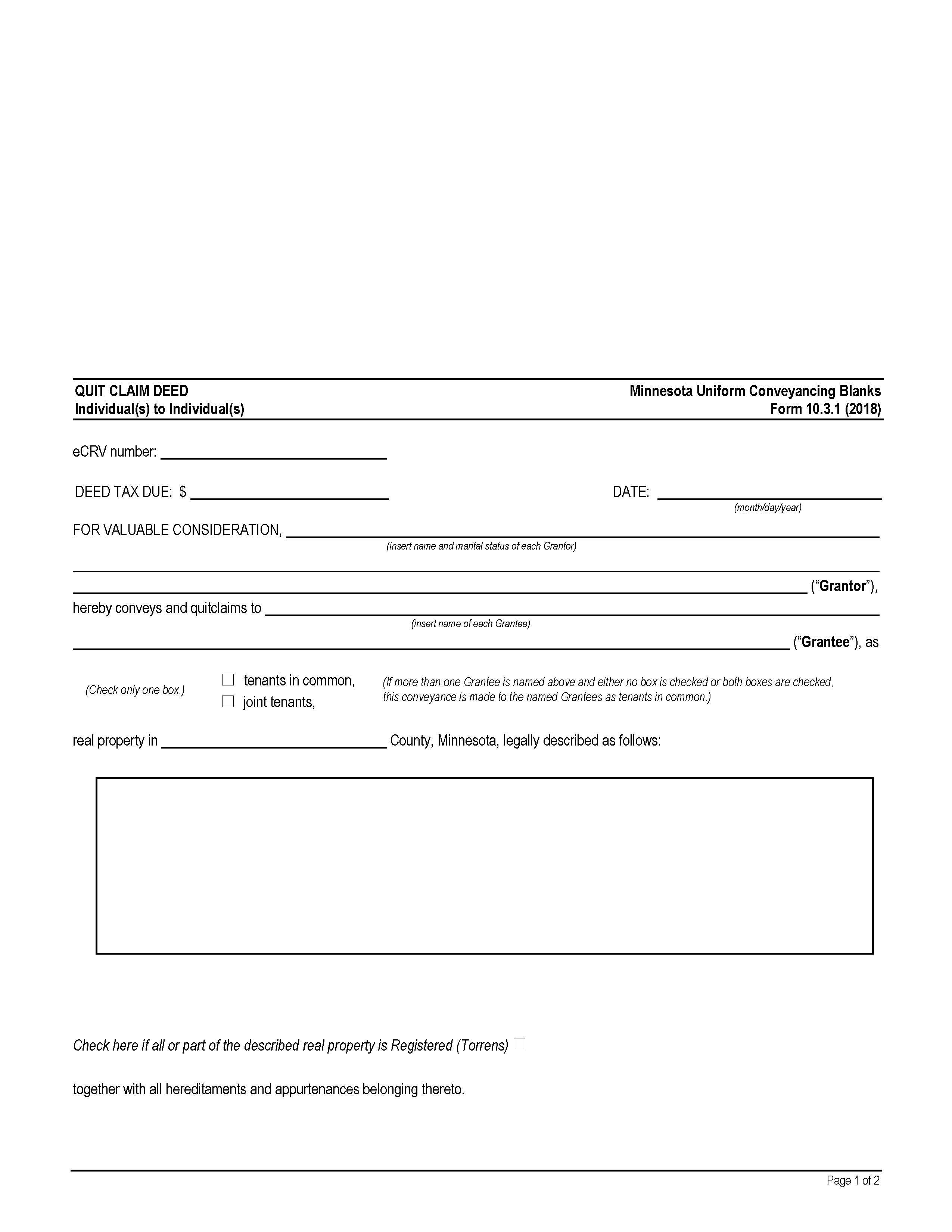Recording Details
- Signing Requirements – The grantor and a notary public must sign the document.[1]
- Where to Record – County Recorder/Registrar of Titles[2]
- Recording Fees – $46 (as of this writing).[3]
Formatting Requirements
Minnesota County Recorders require deeds to adhere to certain formatting standards[4]:
- Paper: Max 8.5”x14” – white – at least 20lb weight
- Typeface: At least 8-point type – black
- Margins: 3” for the top of the first page, 0.5” on all other sides and pages
Quit Claim Deed (Preview)
Well Disclosure Certificate – If the number of wells has changed since the last certificate was filed, this certificate must be filed with the deed. It may also be filed online.[6]
